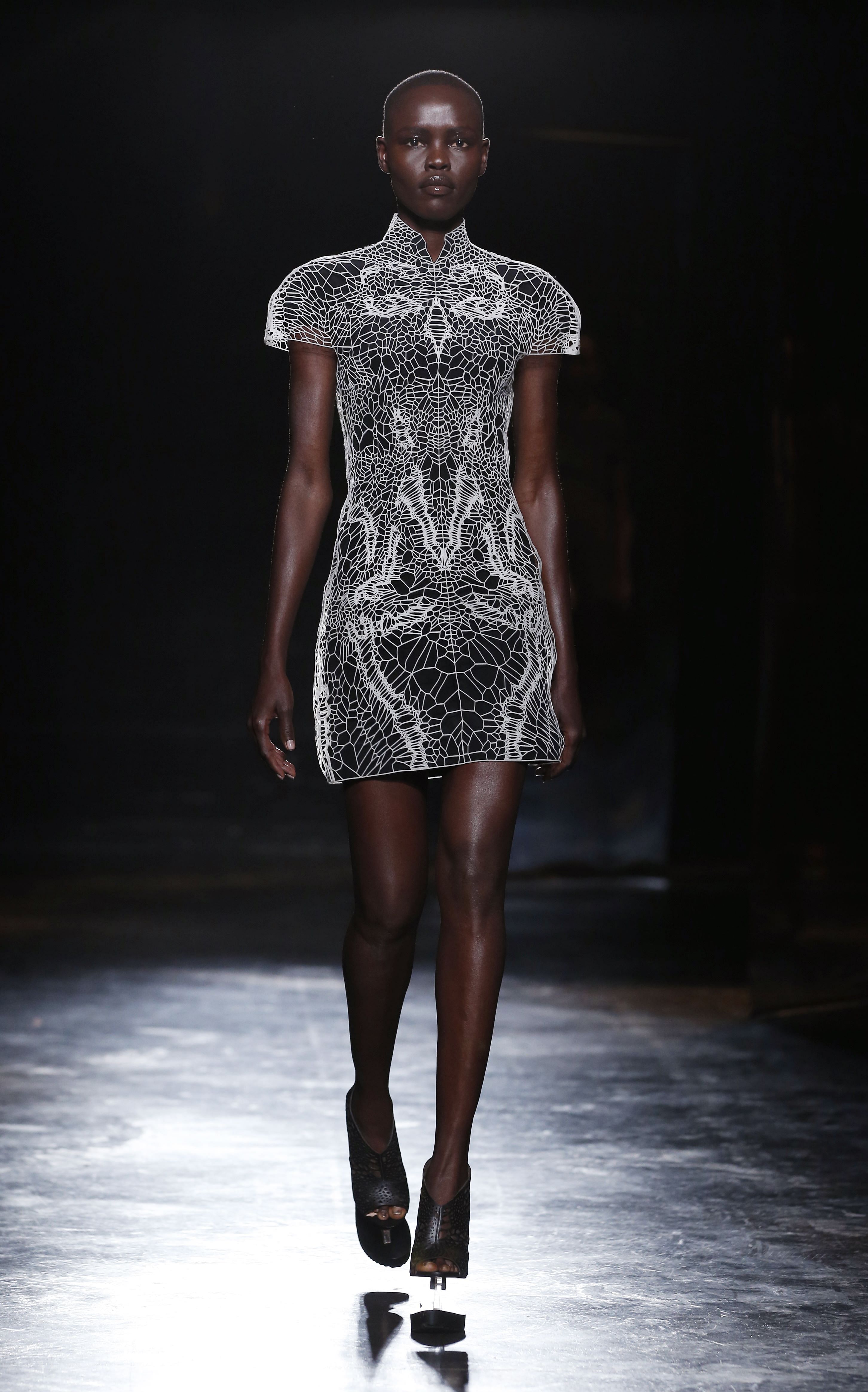NEW YORK • When the doors open on May 5 for Manus X Machina, the Met Costume Institute's Spring exhibition, visitors will be treated to 90 otherworldly high-fashion garments, including many striking items made with 3Dprinting.
These outfits - a layered, crosshatched suit from Chanel's 2015-16 Autumn/Winter haute couture line; an exotic, infinitely complex polyamide top in Dutch designer Iris Van Herpen's Spring/Summer collection - are exotic now, but viewers will see a whole lot more of them in the not-too-distant future.
Currently, as evidenced by the fact that these dresses are in a museum display, 3D-printed clothes are pretty much the exclusive purview of haute couture. But as the technology is adopted by more apparel makers, it has the potential to trickle down to the masses.
When that happens, "it can be as revolutionary as the sewing machine", said Mr Andrew Bolton, Manus x Machina's curator."It means you can 3D-print your dress to your exact measurements at home."
Couture clothes, in the traditional fashion industry definition, are "items made for you, that fit your body", he said.
Usually that means the garments are expensive, rare and difficult to obtain. But with 3Dprinting, this extravagance will move into any home that has a printer.

"Because it has the ability to mould exactly to your measurements, it's environmentally friendly too" he said. "There's no waste, whereas there's always waste with textiles."
Before you run out to buy a Makerbot for your next cocktail dress, keep in mind that 3D-printing is still in its early stages. Companies such as Materialise, a Belgian software company that creates 3Dprinting technology and that helped create several of the dresses in the Met show, have the capability to make virtually anything a computer can model.
But wearing that 3D-printed object is a different matter. "At the beginning, they were stiff, almost like body armour," said Materialise creative director Joris Debo.
"Slowly there were changes to make the design more flexible."
Even now, however, 3D-printed material cannot come close to a fabric such as cotton, let alone Lycra. That means that at present, 3D-printing's fashion moment is directed towards (non-pliable) accessories first.
"What you're seeing more of is the market starting to work with accessories - hardware, jewellery, footwear, eyewear," said Mr Debo.
Both Mr Debo and Mr Bolton said that before there is a head-to -toe 3D-printed outfit, there could first be a trend towards hybrid- isation.
"One area where I haven't seen much growth is the combination of 3D printing with fabric," said Mr Bolton. "Like a structured, 3Dprinted bodice, with a fabric skirt."
Mr Debo compared it to the gradual introduction of electric cars. "Everyone is talking about a new industrial revolution, but I think of it as a normal evolution. A mass production component will become a mass customised component."
And what will it take for homeprinted dresses to become a reality?
"To my knowledge, there are a couple of companies working on this," Mr Debo said, adding that it would entail the printing of a natural fibre. "We're still pretty far off."
Mr Bolton echoes that sentiment, calling home-printing "a dream".
Yet both point to Iris Van Herpen's more commercial designs as the first step.
"It's a slow process of adoption," Mr Debo said. "But in the last two or three years, it has changed quite rapidly."
BLOOMBERG
